Found a total of 10000 related content


What are attributes and methods in Python classes?
Article Introduction:In Python, class attributes and instance attributes are used to store data related to a class or instance, while methods define the behavior of an object. ① Class attributes are shared by all instances, such as species; ② Instance attributes are specific to each object, such as name; ③ Methods are functions defined in the class, and use self to access instance data, such as bark(); ④ Class methods (@classmethod) and static methods (@staticmethod) provide flexible access to classes or instances; ⑤ Attributes and methods usually work together, such as using class attribute count to track the number of instances and output through class method total_dogs(). This structure makes object-oriented programming more organized and maintainable.
2025-06-24
comment 0
732

What is the difference between class variables and instance variables?
Article Introduction:The article discusses the differences between class and instance variables in OOP, detailing their usage, access methods, and benefits. It argues that class variables are for shared data, while instance variables allow for unique instance data.
2025-03-19
comment 0
493
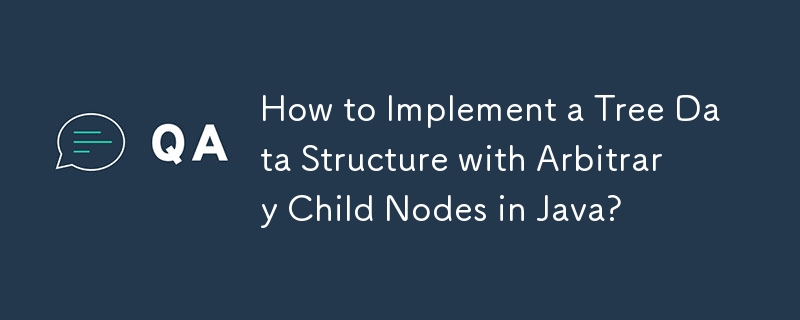
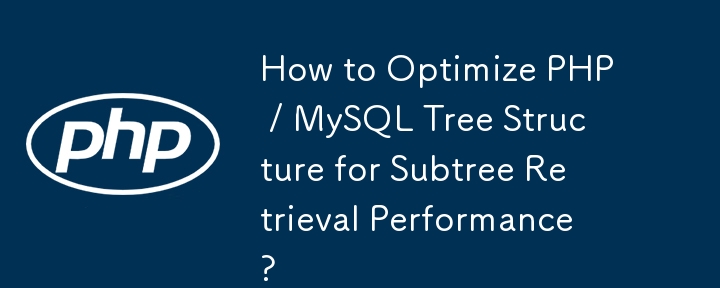
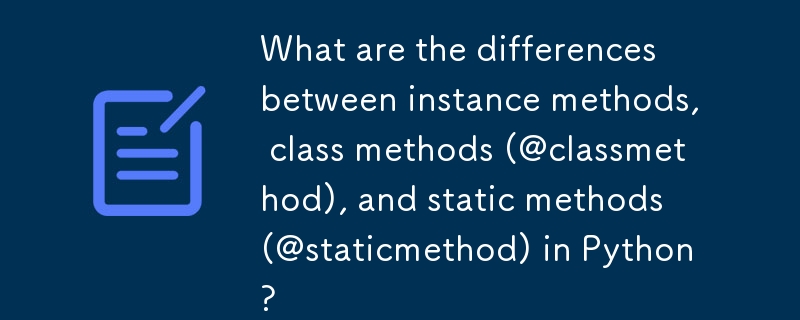
What are the differences between instance methods, class methods (@classmethod), and static methods (@staticmethod) in Python?
Article Introduction:In Python, the difference between instance methods, class methods and static methods is that they access different data types. 1. The instance method is used to process object data, automatically receives an instance (self) as the first parameter, suitable for accessing or modifying instance properties; 2. The class method (@classmethod) is used to affect the logic of the entire class, and receives a class (cls) as the parameter, often used to replace constructors or modify class-level variables; 3. The static method (@staticmethod) is used for tool functions that are not related to the class or instance, and does not receive self or cls parameters, suitable for encapsulating auxiliary functions related to logic but do not require internal access.
2025-06-11
comment 0
888
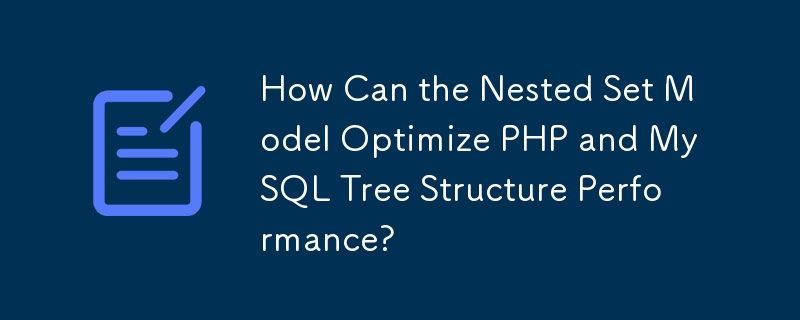
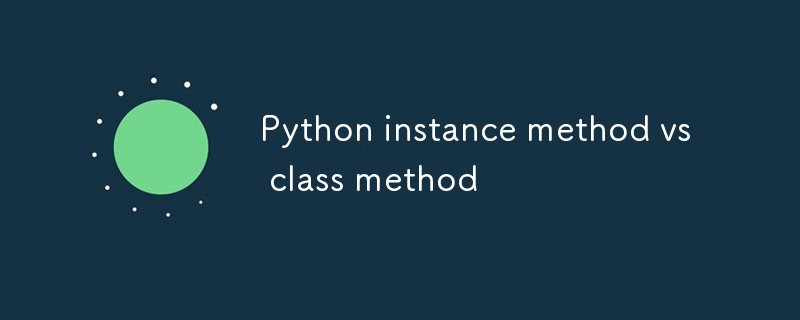
Python instance method vs class method
Article Introduction:The instance method depends on object data and the class method operates the class level information. The instance method takes self as the first parameter, and needs to be called through an instance to access and modify the object state; the class method is defined by @classmethod, and cls as the first parameter, and can be called through a class or instance, and is often used for factory methods or class-level operations; if you need to operate the object's own data during selection, you use the instance method, and if you process the logic related to the class, you use the class method.
2025-07-04
comment 0
830
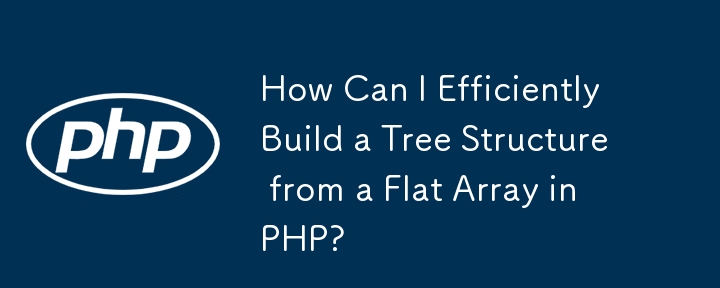
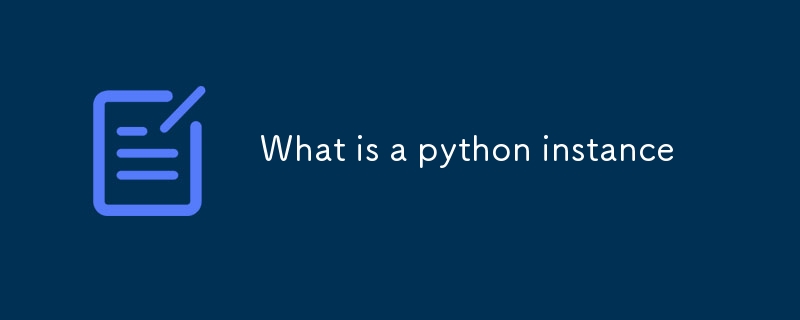
What is a python instance
Article Introduction:In Python, instances are concrete implementations of classes. 1. Creating an instance refers to generating an independent object with its own data and can use class to define behavior; 2. Use the isinstance() function to check whether the object is an instance of a specific class; 3. Each instance has its own attribute value, such as name, age, etc.; 4. The instance allows you to manage multiple independent entities with the same structure, which helps code organization and reuse; 5. Operate instance data through instance methods, use specific instances when calling, and reference the current instance through self parameters within the method.
2025-07-04
comment 0
596
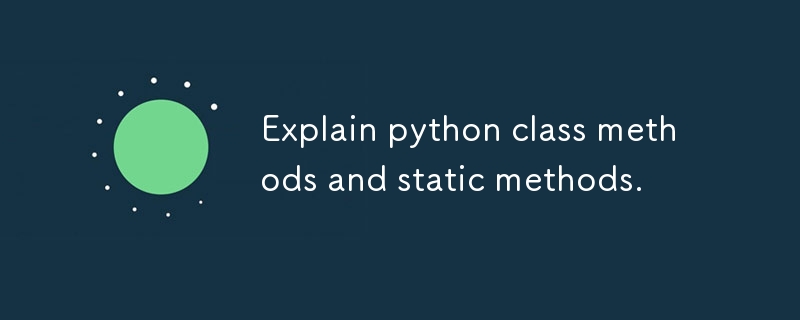
Explain python class methods and static methods.
Article Introduction:Class methods automatically receive classes as the first parameter, suitable for creating or operating class-level data; static methods do not bind any parameters, suitable for functions related to classes but do not need to access classes or instances. 1. Class methods are often used as alternative constructors or processing class states, such as creating objects through string parsing; 2. Static methods are used to classify ordinary functions in classes, such as verifying whether age is legal; 3. If you need to access class states, use @classmethod, if you only need to classify tool functions, use @staticmethod, and use instance methods to access instance properties.
2025-07-08
comment 0
537
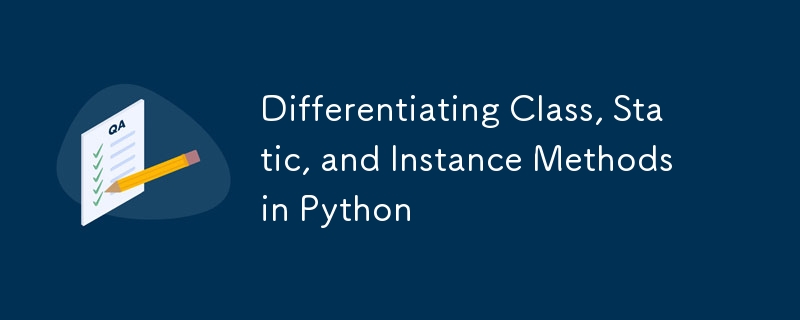
Differentiating Class, Static, and Instance Methods in Python
Article Introduction:In Python, methods in classes are divided into three types: instance methods, class methods and static methods. 1. The instance method accepts self parameters by default, which are used to access or modify instance properties; 2. The class method uses the @classmethod decorator and accepts the cls parameter to operate class-level data; 3. The static method uses the @staticmethod decorator, which does not rely on self or cls, and is suitable for tool functions that are not related to classes or instances. The choice of these three methods depends on the required scope and access permissions.
2025-07-05
comment 0
476

What is a class in Java?
Article Introduction:In Java, classes are blueprints or templates of objects that define the behavior and properties of objects. 1. The class contains variables (fields) to store data; 2. The method defines the object behavior; 3. The constructor is used to initialize the object; 4. The access modifier controls the access method of members. For example, the Car class may contain color and speed fields, accelerate method, and constructor. Create an instance of the class through the new keyword, such as CarmyCar=newCar(30);, each instance runs independently to implement the encapsulation and reuse of data and logic.
2025-07-01
comment 0
830
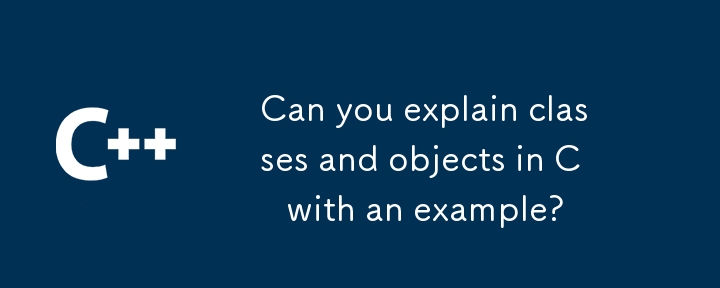
Can you explain classes and objects in C with an example?
Article Introduction:In C, a class is a user-defined data type, containing data and functions, and an object is an instance of a class. Classes are like blueprints, which define the structure and behavior of objects. For example, classCar defines the brand, model, year and methods of starting the engine; objects are specific examples created based on the blueprint, such as myCar and yourCar represent different car objects and have their own data copies. Using classes and objects can improve the organization, reusability, abstraction and maintainability of the code, and is suitable for scenarios such as player character modeling in game development. In addition, the access modifier controls member access rights, the constructor is used to initialize objects, and the class also supports inheritance to build a hierarchy.
2025-06-29
comment 0
338
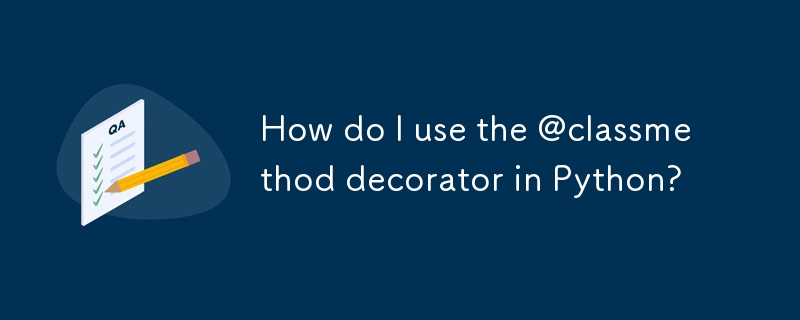
How do I use the @classmethod decorator in Python?
Article Introduction:@classmethod is used in Python to define a class method that receives a class (cls) as the first parameter, not an instance (self), allowing it to access or modify class-level data or create instances. It is suitable for alternative constructors, handling class-level states, and implementing factory patterns. Unlike @staticmethod, the latter does not receive class or instance parameters. For example, you can use @classmethod to implement different object creation methods, such as initializing Person instances with full names. Additionally, @classmethod performs well in inheritance and will correctly pass its own class when called. When using it, make sure that the test class and instance call behavior are consistent and avoid overuse.
2025-06-27
comment 0
162
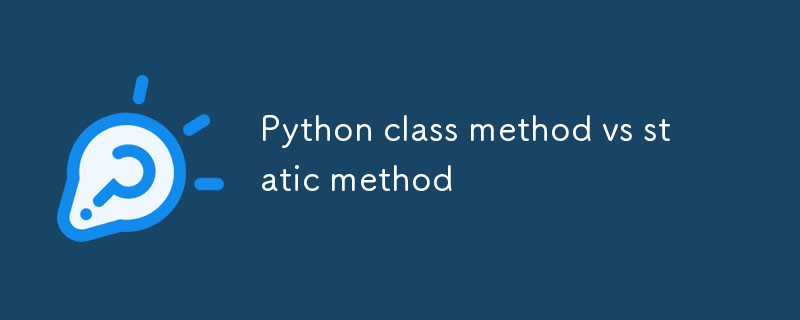
Python class method vs static method
Article Introduction:The main difference between classmethod and staticmethod is parameter passing and purpose. ① Classmethod receives the class as the first parameter (cls), which can be used to access class properties and methods, which are suitable for factory methods or class-level operations; ② Staticmethod does not receive automatically passed parameters, but is more like an ordinary function bound to a class, suitable for tool functions or logical encapsulation; ③ Classmethod supports inheritance and rewrite and can return subclass instances, and although staticmethod also supports rewrite, it does not involve class or instance state; ④ If the method needs to call the class itself data, select classmethod. If it is only logical classification and has no class structure, select staticme
2025-07-04
comment 0
988
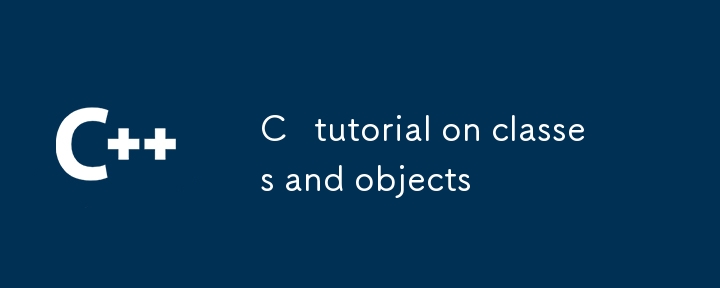
C tutorial on classes and objects
Article Introduction:In C, a class is a user-defined data type, a method to encapsulate and manipulate data, and an object is a specific instance of the class. 1. The class keyword is used to define the class, including member variables and member functions, and control visibility through access modifiers; 2. The object can be directly declared, defined or initialized by batches; 3. The constructor is used to initialize the object, without a return type, and can be overloaded; 4. Encapsulate the data protected through private, provide public method access and add verification logic. Mastering classes and objects is the basis for understanding OOP characteristics such as inheritance and polymorphism.
2025-06-30
comment 0
614
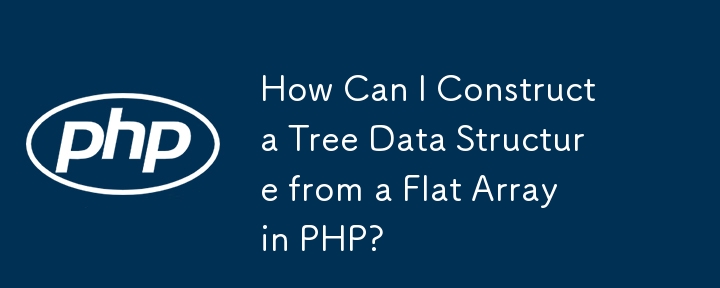
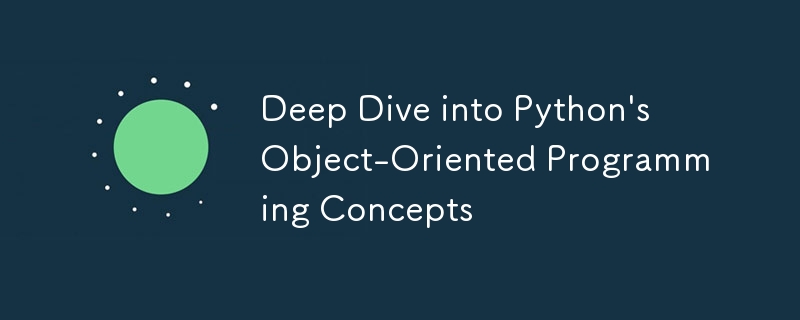
Deep Dive into Python's Object-Oriented Programming Concepts
Article Introduction:Python's object-oriented programming organizes code through classes and objects, emphasizing the combination of data and operations. 1. The class is a template, the object is an instance, and the attributes are initialized with init; 2. Inherit the reusable class function and use super() to call the parent class; 3. Encapsulate the control of access rights through underscore or double underscore to protect the internal state; 4. Polymorphism allows different classes to implement the same-name method and unify the different behaviors of the interface. These features make the program structure clear and easy to maintain.
2025-07-06
comment 0
632

















